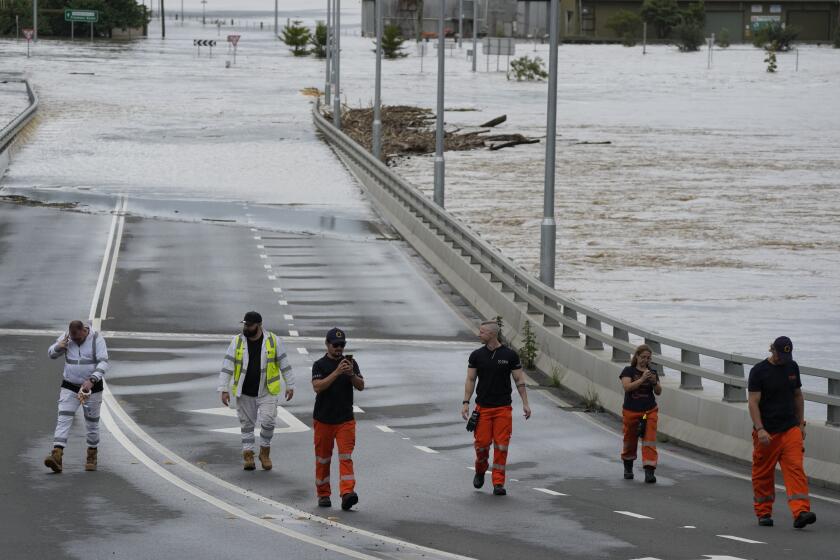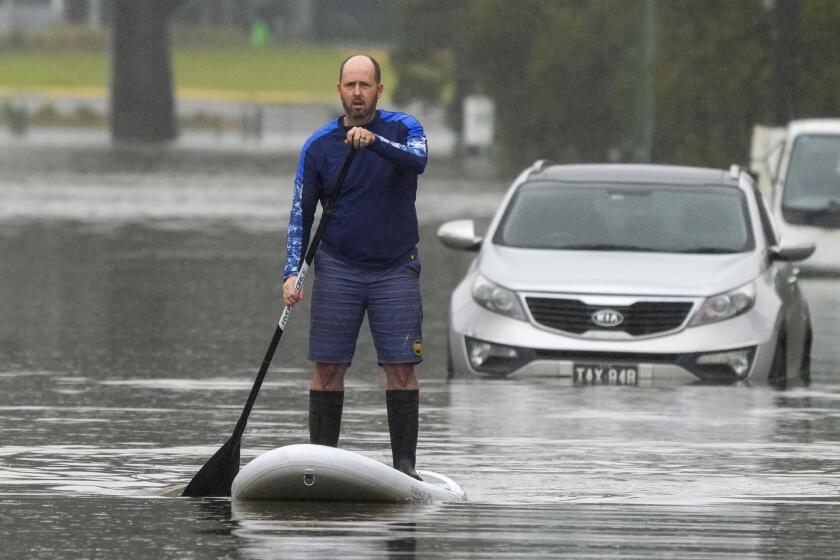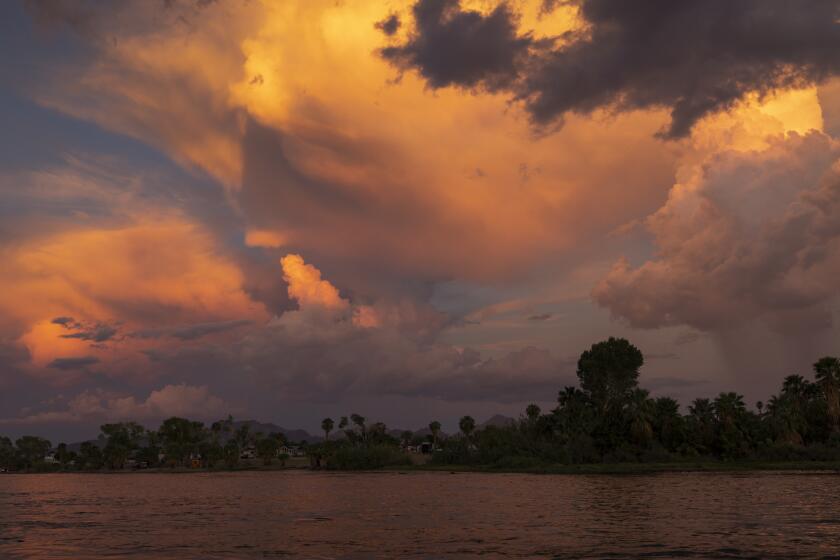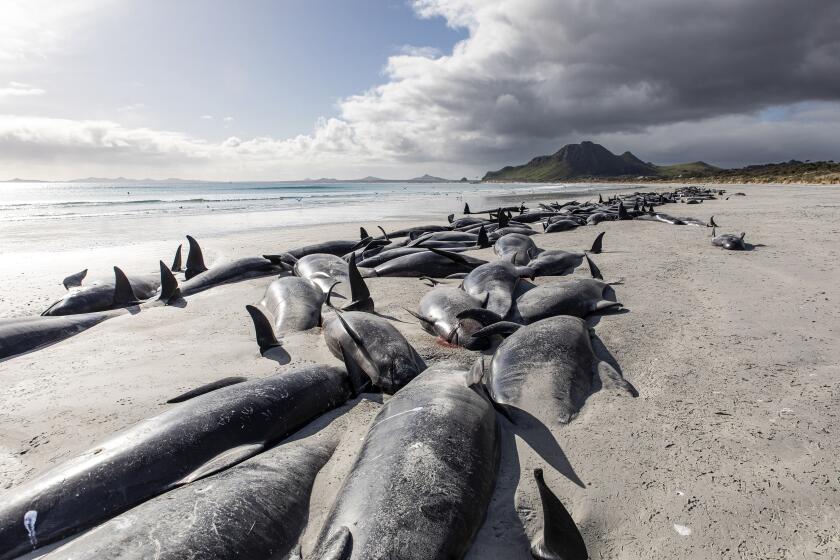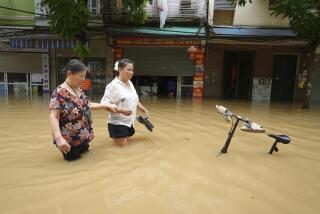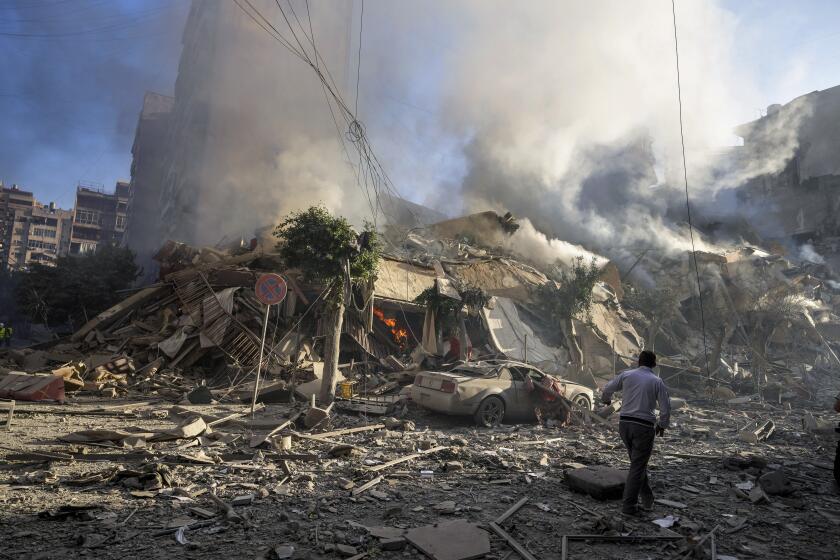Heavy rain during La Niña triggers floods and evacuations in Australia’s southeast
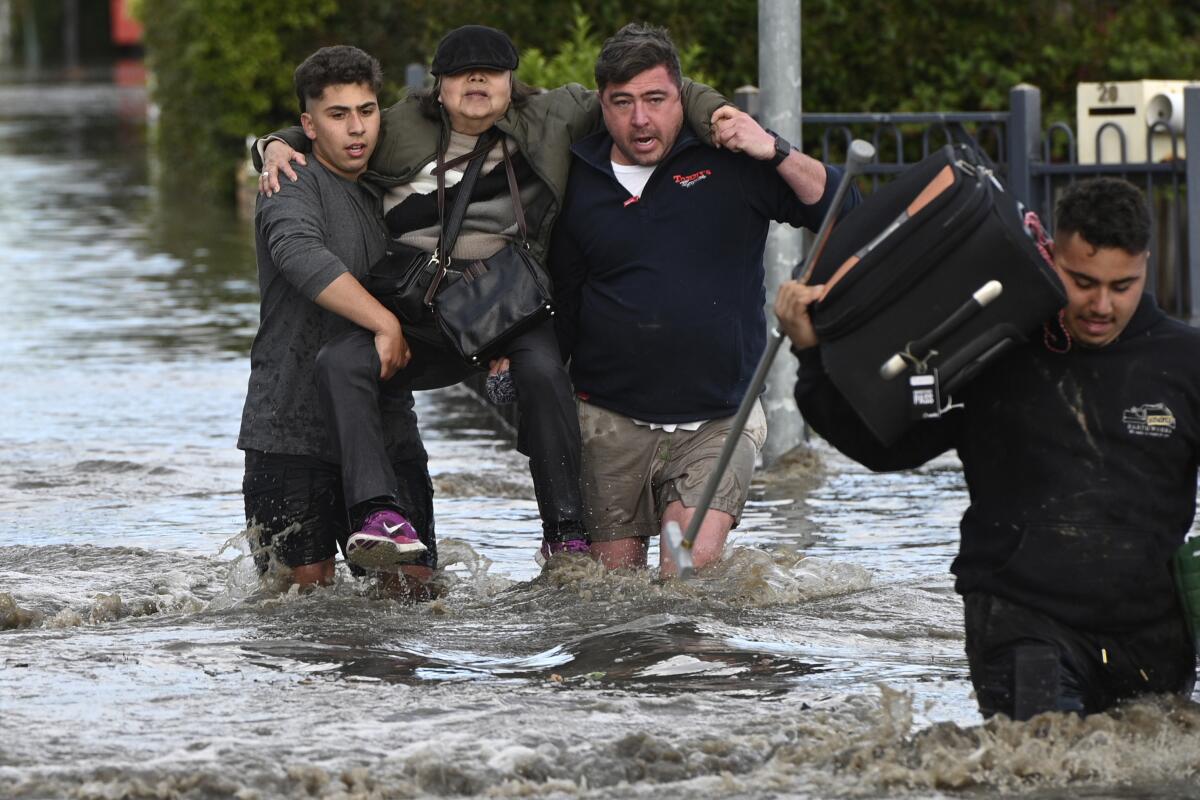
CANBERRA, Australia — Homes were flooded Friday in Melbourne and other cities in Australia’s southeast, with rivers forecast to remain dangerously swollen for days.
About 70 residents were told to leave Maribyrnong in Melbourne’s northwest, along with hundreds in the cities of Benalla and Wedderburn of Victoria state, authorities said. Melbourne is Australia’s second-most populous city with 5 million people.
About 500 homes in Victoria were flooded and another 500 had been isolated by floodwater, Victoria Premier Daniel Andrews said. Those numbers will increase, he said.
Most of the state was experiencing a “very, very significant rainfall event, and it comes, of course, with the ground completely sodden,” Andrews said.
“The real challenge now is we’ve got another rain event next week and the [meteorology] bureau forecasting more rain throughout the next six-to-eight-week period, and it won’t take a lot of additional water for there to be further flood events,” Andrews added. “So this has only just started.”
Andrews said 4,700 homes were without power, more than the 3,500 that the Victoria State Emergency Service had reported earlier Friday.
La Niña, amplified by the effects of climate change, brings years of drought to some parts of the world and torrential rain to others.
The Bureau of Meteorology said major to record flooding was occurring or was forecast to occur on many rivers in Victoria and the island state of Tasmania to the south.
North of Victoria, moderate to major flooding was occurring along several rivers in inland New South Wales state, home of Sydney, the bureau said.
A 63-year-old man was reported missing in floodwater in New South Wales on Tuesday, and a person was reported missing in central Victoria on Friday, officials said. No details of the person missing from the Victorian town of Newbridge have been released.
Police on Tuesday found the body of a 46-year-old man in his submerged car in floodwater near the New South Wales city of Bathurst, west of Sydney.
Hundreds of homes have been inundated in and around Australia’s largest city in a flood emergency affecting at least 50,000 people.
The State Emergency Service said it had carried out 108 flood rescues in Victoria in the last 48 hours.
State Emergency Service commander Josh Gamble said complacency was the main reason for people getting into trouble.
“We haven’t had that many flood rescues for quite some time — for some years, in fact,” Gamble said.
“Many of these people are putting their own lives at risk, their own children in some circumstances, but, more importantly, other community members and responders. And that’s in all parts of the state, not just metropolitan areas,” Gamble said.
Our oceans. Our public lands. Our future.
Get Boiling Point, our new newsletter exploring climate change and the environment, and become part of the conversation — and the solution.
You may occasionally receive promotional content from the Los Angeles Times.
Evacuation orders were also in place for the town of Rochester on the Campaspe River, north of Melbourne, and the central Victorian towns of Carisbrook and Seymour on the Goulburn River.
In New South Wales, 550 people have been isolated or evacuated from the town of Forbes as the Lachlan River flooded, authorities said.
South of Forbes, parts of the city of Wagga Wagga were evacuated after the Murrumbidgee River exceeding its banks.
“Fortunately, the Murrumbidgee River peaked on Thursday, and we’re starting to see the floodwaters decline in those areas,” New South Wales State Emergency Service official Andrew Edmunds said.
Southern California’s monsoon season looks like it’s extending past September, but experts say it’s a mirage. Rain isn’t expected in the L.A. area Thursday and Friday.
In Tasmania, north coast residents were moving to higher ground, with river levels forecast to rise. The major port of Devonport was closed Friday because
of flooding of the Mersey River.
The meteorology bureau last month declared that a La Niña weather pattern, which is associated with above-average rainfall in eastern Australia, was underway in the Pacific.
The bureau forecast that the La Niña event may peak during the current Southern Hemisphere spring and return to neutral conditions early next year.
La Niña is the cooler flip side of the better-known El Niño drying pattern in the hemisphere. La Niña occurs when equatorial trade winds become stronger, changing ocean surface currents and drawing up cooler deep water.
The patterns are reversed for the United States and elsewhere in the Northern Hemisphere: La Niña is associated with drier conditions, El Niño with heavier rainfall.
The whales beached themselves on the Chatham Islands, which are home to about 600 people and lie about 500 miles east of New Zealand’s main islands.
It is the third La Niña since 2019, Australia’s hottest and driest year on record.
That year came to a catastrophic conclusion with wildfires fueled by drought that directly or indirectly killed more than 400 people, destroyed more than 3,000 homes and razed 47 million acres of woods, farmland and city fringes.
Sydney, New South Wales’ capital and Australia’s largest city, last week beat its 1950 record to make 2022 its wettest year ever.
More to Read
Sign up for Essential California
The most important California stories and recommendations in your inbox every morning.
You may occasionally receive promotional content from the Los Angeles Times.
